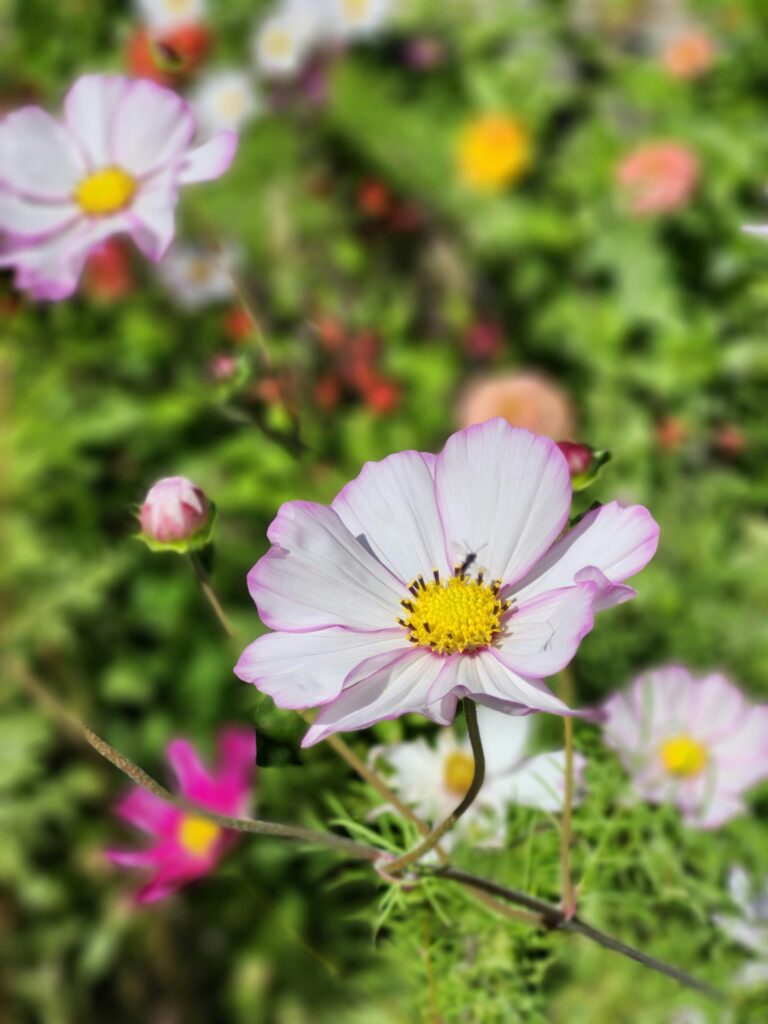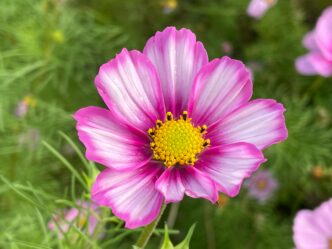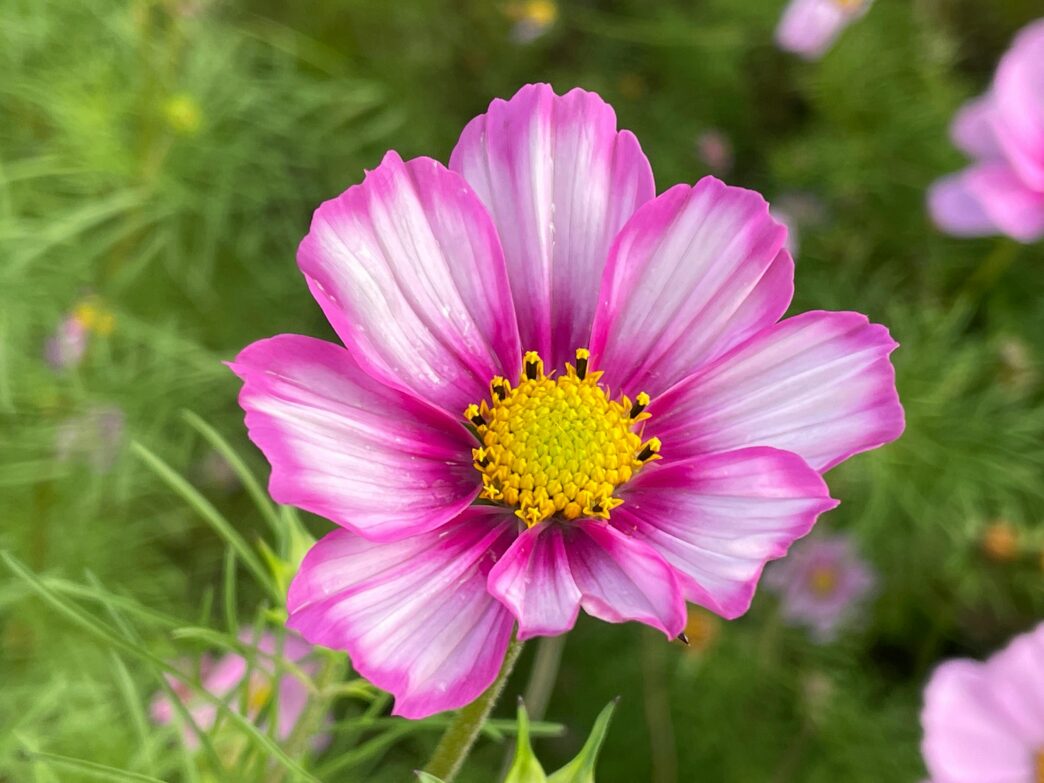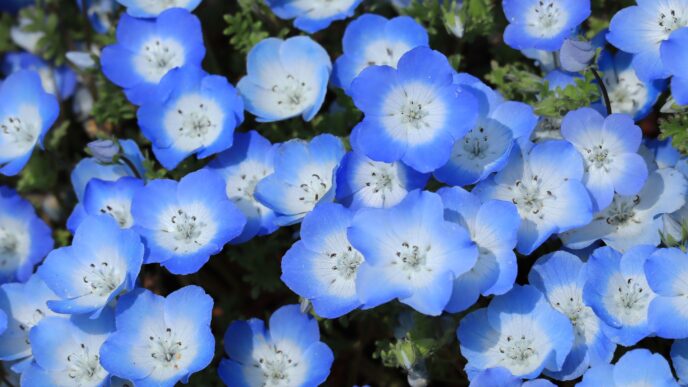Few flowers capture the effortless charm of a summer garden quite like cosmos (Cosmos bipinnatus). With their daisy-like blooms, feathery foliage, and graceful sway in the breeze, cosmos are often called the “carefree garden flower.” Native to Mexico, these cheerful annuals are renowned for thriving with little fuss, rewarding gardeners with weeks of color in shades of pink, white, crimson, orange, and yellow.
Whether planted in borders, wildflower meadows, or simple containers, cosmos bring a touch of elegance and lightness that feels almost magical. Let’s explore how to grow, care for, and enjoy these easygoing beauties.
Why Grow Cosmos? 🌼
Cosmos flowers offer more than good looks—they enrich the garden experience.
- Low-maintenance: Require little water, tolerate poor soils, and thrive in full sun.
- Long bloom season: From early summer until the first frost.
- Pollinator-friendly: Attract bees, butterflies, and beneficial insects.
- Cut flower favorite: Long-lasting blooms perfect for bouquets.
- Self-seeding habit: Often return the following year without effort.
Ideal Growing Conditions 🌱
Sunlight
- Cosmos love full sun (6–8 hours daily).
- Too much shade reduces blooms and makes plants leggy.

Soil
- Thrive in average, well-draining soil.
- Avoid overly rich soil—it promotes foliage instead of flowers.
- pH range: 6.0–7.0 (slightly acidic to neutral).
Water
- Drought-tolerant once established.
- Water young plants regularly, then reduce to once a week or during dry spells.
Climate
- Grown as annuals in most regions.
- Best suited for USDA zones 2–11.
- Bloom best in warm weather but tolerate mild cool spells.

Popular Varieties of Cosmos 🌸
- Cosmos bipinnatus (Common Cosmos): Tall, airy plants with pink, white, and crimson blooms.
- Cosmos sulphureus (Sulphur Cosmos): Compact plants with bright orange, yellow, or red flowers.
- Cosmos atrosanguineus (Chocolate Cosmos): Unique maroon flowers with a chocolate scent; usually grown from tubers.
- Dwarf Varieties: ‘Sonata’ and ‘Cosmic’ are excellent for containers or smaller gardens.
How to Plant Cosmos 🌿
From Seeds
- Direct sow outdoors after the last frost; cosmos dislike transplanting.
- Scatter seeds over prepared soil and lightly press them in (don’t cover deeply, they need light to germinate).
- Germination: 7–10 days at 65–70°F (18–21°C).
- Thin seedlings to 12–18 inches apart once established.
From Transplants
- If starting indoors, sow seeds in biodegradable pots to avoid disturbing roots.
- Harden off seedlings before planting outdoors.
Containers
- Use well-draining potting mix.
- Choose dwarf or compact varieties for containers.

Caring for Cosmos Flowers 🌞
Watering
- Water young plants consistently until established.
- Once mature, cosmos tolerate drought well.
- Avoid overwatering, which can cause root problems.
Fertilizing
- Minimal feeding required.
- Too much fertilizer = lush foliage, fewer flowers.
- A light feeding of balanced fertilizer once during mid-season is plenty.
Mulching
- Use mulch sparingly; cosmos prefer slightly dry conditions.
Staking
- Tall varieties may need staking in windy areas to prevent flopping.

Pruning and Maintenance ✂️
- Deadheading: Regularly remove spent flowers to encourage continuous blooming.
- Cutting back: If plants become leggy, cut back by one-third to rejuvenate growth.
- Pinching: Pinch young seedlings to promote bushier plants.
Pests and Problems 🐛
Cosmos are generally trouble-free but can face minor issues:
- Aphids: Attracted to tender shoots; spray with soapy water or neem oil.
- Powdery Mildew: White fungal growth, usually from overcrowding or excess moisture.
- Slugs and Snails: May nibble seedlings; protect young plants with barriers.
Propagation of Cosmos 🌱
1. Seeds
- The most common method. Collect seeds from dried flower heads in late summer.
- Store in a cool, dry place and sow next spring.
2. Self-Seeding
- Cosmos readily self-seed; allow a few flowers to go to seed if you want natural regrowth.
3. Division (Chocolate Cosmos)
- Tubers can be divided in spring for propagation.
Seasonal Care Calendar 📅
- Spring: Sow seeds directly after frost, pinch seedlings for fullness.
- Summer: Water weekly, deadhead blooms, stake tall varieties.
- Fall: Allow some blooms to set seed if you want self-sowing next year.
- Winter: Collect and store seeds; in warm climates, mulch chocolate cosmos tubers.
Expert Tips for Success 🌟
- Don’t over-fertilize—cosmos bloom best in lean soils.
- Plant in drifts or clusters for a natural, meadow-like effect.
- Cut flowers often; the more you cut, the more they bloom.
- Use dwarf cosmos for containers and tall ones for background borders.
- Pair cosmos with zinnias, sunflowers, or marigolds for a pollinator-friendly garden.
FAQs About Cosmos ❓
1. Do cosmos come back every year?
Most cosmos are annuals, but they self-seed freely, so they often return on their own. Chocolate cosmos is perennial in warm climates.
2. Can cosmos grow in pots?
Yes! Dwarf varieties like ‘Sonata’ are perfect for containers.
3. How tall do cosmos grow?
Depending on the type, cosmos can range from 1 foot to 6 feet tall.
4. Do cosmos need fertilizer?
No, too much fertilizer reduces blooms. They thrive in poor soils.
5. Are cosmos good cut flowers?
Absolutely! They last up to a week in vases and add a wildflower look to arrangements.
6. Do cosmos attract pollinators?
Yes—bees, butterflies, and even hummingbirds love them.
7. How long do cosmos take to bloom from seed?
They usually start flowering within 8–10 weeks of sowing.
Conclusion: A Flower of Effortless Beauty 🌺
Cosmos flowers embody everything a gardener could wish for—easy care, abundant blooms, and a free-spirited charm that lights up any garden. From wildflower patches to elegant cut arrangements, they deliver joy with almost no effort.
If you’re looking for a flower that will reward you season after season with minimal work, cosmos should be at the top of your list. Plant them this year, and let their breezy blooms remind you how simple and beautiful gardening can be.




